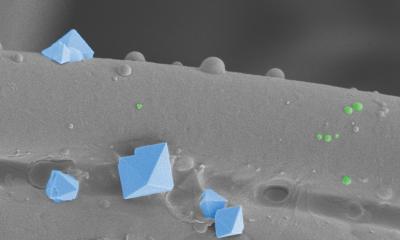Image source: Shutterstock/l i g h t p o e t
News • COVID-19 infection control
Combatting the novel coronavirus with thorough hand hygiene
WHO Chief Adhanom Ghebreyesus has declared the novel coronavirus (SARS-CoV-2) a global health emergency. He said the decision was reached not because of the situation in China, but because of, “what is happening in other countries.”
On Feb. 17, the number of infections totaled around 71,000 globally based on data of the WHO. COVID-19 – the official shorthand name of the novel corona virus – was first identified in the Chinese city of Wuhan on Dec. 31, 2019, and is currently spreading worldwide.
Transmission and symptoms
Hand sanitizers used should at least have limited virucidal efficacy
Andreas Glöckner
According to current scientific knowledge, the virus only attacks the lungs. This means that it is mainly transmitted via infected droplets. According to the WHO, the currently known symptoms of infection include breathing difficulties, fever, or shortness of breath, which can occur as early as the second day after infection. In more severe cases, which are believed to mainly affect people with a serious underlying disease, patients can suffer from pneumonia or kidney failure.
"In order to effectively protect oneself from coronavirus, one should apply the usual infection protection measures for droplet infections. A crucial component of this is thorough hand hygiene. Hand sanitizers used should at least have limited virucidal efficacy", says Dr. Andreas Glöckner, Medical Director of manufacturer Ophardt Hygiene.
Recommended article

News • Genomic insights into 2019-nCoV
New coronavirus: largest meta-analysis yet answers important questions
Scientists at the University of Bologna have conducted the largest analysis of coronavirus 2019-nCoV genomes sequenced so far. This analysis confirms that the virus originates in bats and shows a low variability: the virus heterogeneity is low. At the same time, researchers identified a hyper-variable genomic hotspot in the proteins of the virus responsible for the existence of two virus…
Based on previous findings, the virus has a so-called basic infection rate of about 2.6. This figure indicates the average number of people infected by a person who is already ill. By comparison, the rate for measles is between 15-18 and 5-7 for polio, and the figures show that COVID-19 is at the lower end of the range, roughly on par with the influenza virus, which has a baseline of infection rate of 2-3.
How should one act in concrete terms?

The Robert Koch Institute (RKI)’s recommendations for medical institutions are initially based on the procedure for the prevention of respiratory infections. This includes, among other things, the wearing of multi-layer mouth and nose masks by the patient, and restriction in an isolation room, if possible with an airlock. In addition, consistent adherence to the usual basic hygiene measures, which includes hygienic hand disinfection, is considered an important component. The alcohol-based hand rubs products used should have a limited virucidal, limited virucidal plus or virucidal effect. Regardless of suspected or confirmed cases of infection, regular and careful hand hygiene can help protect against the spread of the spread of infection.
Ophardt Hygiene recommends using similar steps to influenza season preparation to combat the novel coronavirus. Hygiene stations that enable hygiene in public areas are a perfect tool to help stop the spread of infections. This alongside, regular hand washing can help reduce the risk of illness. The recommended product to help fight the spread of viruses like the COVID-2019 is the touchless Praesidio hand sanitizer dispenser. The eye-catching, stainless steel design is made to attract users in both healthcare and public spaces.
Source: Ophardt Hygiene
19.02.2020







